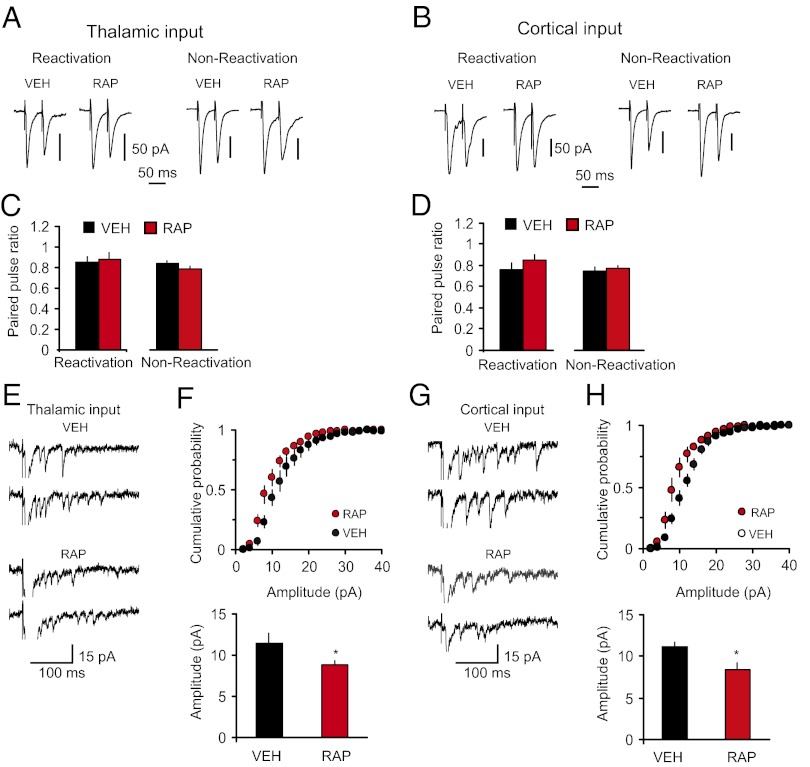Fig. 5.
Postretrieval stabilization of conditioning-induced potentiation in inputs to the LA implicates postsynaptic mechanisms. (A, Left) Reactivation, examples of EPSCs evoked in thalamic input to the LA with paired stimuli in slices from fear-conditioned rats that received one injection of either rapamycin (RAP; 20 mg/kg, i.p.) or vehicle (VEH) immediately after the fear memory reactivation (memory was retrieved at 24 h postconditioning). Recordings were performed 24 h after the memory reactivation. (A, Right) Nonreactivation, examples of EPSCs recorded in slices from rats that received rapamycin or vehicle injections at 24 h postconditioning without memory reactivation. Recordings were performed 24 h after the injections. (B) Analogous to A, but the EPSCs were recorded in cortical input. (C) Summary plot of PPR data in thalamic input (reactivation: VEH, n = 19 neurons; RAP, n = 21 neurons; t test, P = 0.79; nonreactivation: VEH, n = 17 neurons; RAP, n = 24 neurons; t test, P = 0.19). (D) Summary plot of PPR data in cortical input (reactivation: VEH, n = 11 neurons; RAP, n = 13 neurons; t test, P = 0.31; nonreactivation: VEH, n = 10 neurons; RAP, n = 19 neurons; t test, P = 0.63). (E) Traces of the asynchronous quantal EPSCs evoked by stimulation of thalamic input in slices from VEH or RAP groups. (F, Upper) Cumulative amplitude histograms of asynchronous quantal events recorded in thalamic input to the LA in slices from VEH or RAP rats. (F, Lower) Summary plot of asynchronous EPSCs data (mean amplitude; VEH, n = 5 neurons; RAP, n = 7 neurons; t test, *P = 0.048). (G and H) The experiments were analogous to E and F, but the asynchronous EPSCs were recorded in cortical input to the LA (VEH, n = 5 neurons; RAP, n = 6 neurons; t test, *P = 0.026). Error bars indicate SEM.

